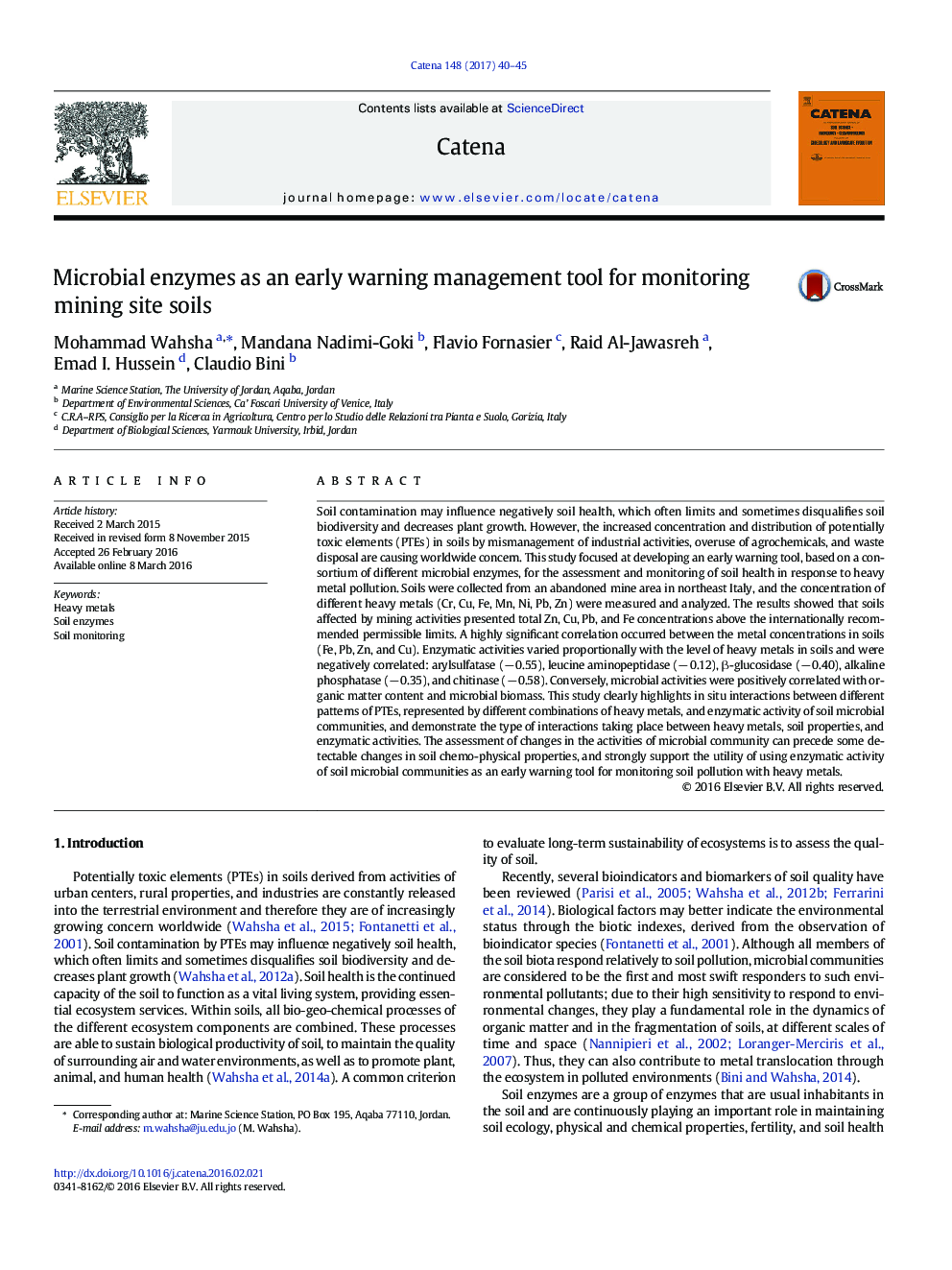| کد مقاله | کد نشریه | سال انتشار | مقاله انگلیسی | نسخه تمام متن |
|---|---|---|---|---|
| 4570811 | 1332076 | 2017 | 6 صفحه PDF | دانلود رایگان |
• Bioindicators indicate the environmental status through the biotic indexes.
• Microbial communities are considered to be the most swift responders to environmental stress.
• Role of microbial enzymes as a management tool for monitoring pollutants areas.
Soil contamination may influence negatively soil health, which often limits and sometimes disqualifies soil biodiversity and decreases plant growth. However, the increased concentration and distribution of potentially toxic elements (PTEs) in soils by mismanagement of industrial activities, overuse of agrochemicals, and waste disposal are causing worldwide concern. This study focused at developing an early warning tool, based on a consortium of different microbial enzymes, for the assessment and monitoring of soil health in response to heavy metal pollution. Soils were collected from an abandoned mine area in northeast Italy, and the concentration of different heavy metals (Cr, Cu, Fe, Mn, Ni, Pb, Zn) were measured and analyzed. The results showed that soils affected by mining activities presented total Zn, Cu, Pb, and Fe concentrations above the internationally recommended permissible limits. A highly significant correlation occurred between the metal concentrations in soils (Fe, Pb, Zn, and Cu). Enzymatic activities varied proportionally with the level of heavy metals in soils and were negatively correlated: arylsulfatase (− 0.55), leucine aminopeptidase (− 0.12), β-glucosidase (− 0.40), alkaline phosphatase (− 0.35), and chitinase (− 0.58). Conversely, microbial activities were positively correlated with organic matter content and microbial biomass. This study clearly highlights in situ interactions between different patterns of PTEs, represented by different combinations of heavy metals, and enzymatic activity of soil microbial communities, and demonstrate the type of interactions taking place between heavy metals, soil properties, and enzymatic activities. The assessment of changes in the activities of microbial community can precede some detectable changes in soil chemo-physical properties, and strongly support the utility of using enzymatic activity of soil microbial communities as an early warning tool for monitoring soil pollution with heavy metals.
Journal: CATENA - Volume 148, Part 1, January 2017, Pages 40–45
